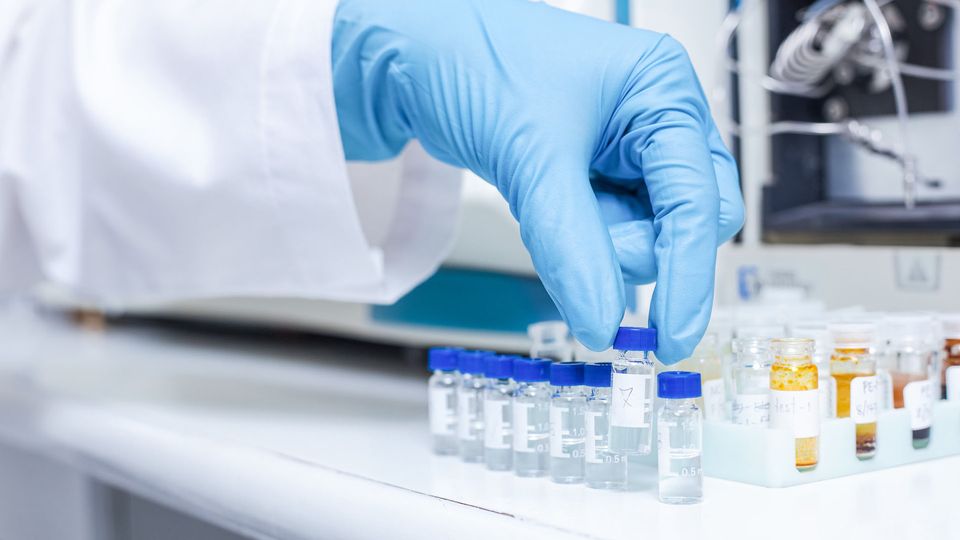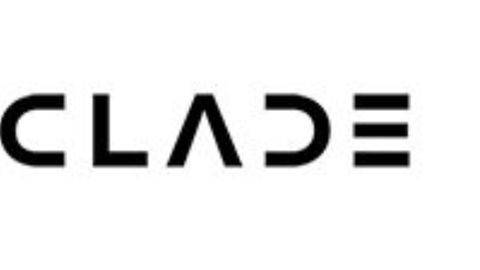Applications of FTIR Spectroscopy
Listicle
Published: December 6, 2023
|
Alexander Beadle
Alexander Beadle is a science writer and editor for Technology Networks. Prior to this, he worked as a freelance science writer. Alexander holds an MChem in materials chemistry from the University of St Andrews, where he won a Chemistry Purdie Scholarship and conducted research into zeolite crystal growth mechanisms and the action of single-molecule transistors.
Learn about our editorial policies

Credit: iStock
Fourier transform infrared (FTIR) spectroscopy is one of the most popular analytical techniques used by scientists today.
The technique can be performed either on the workbench or using a handheld FTIR spectrometer for in-field measurements. FTIR can also easily be combined with other analysis methods, including gas chromatography and thermogravimetric analysis, to gain even more detailed information about a sample.
Explore the diverse applications of FTIR spectroscopy across various industries, including:
- Environmental analysis
- Food and beverage analysis
- Medicine and pharmaceuticals
- Materials science
1
Listicle
Applications of FTIR Spectroscopy
Alex Beadle
Fourier transform infrared (FTIR) spectroscopy is one of the most popular analytical techniques used
by scientists today.1
Differentiated from more general IR spectroscopy techniques through its use of an
interferometer – a helium–neon laser plus accessories that can act as an internal reference for each scan –
the FTIR technique provides very accurate and stable readings of a given sample’s chemical composition.2
Moreover, FTIR is a very flexible technique that can be performed either on the workbench or using a handheld
FTIR spectrometer for in-field measurements. FTIR can also easily be combined with other analysis methods,
including gas chromatography (GC-FTIR) and thermogravimetric analysis (TGA-FTIR), to gain even more detailed
information about a given sample.
In this list, we consider some of the diverse subject areas in which FTIR spectroscopy has become an
indispensable tool.
Environmental analysis
The flexibility of FTIR means that the technique can be easily deployed to test for the presence of pollutants in
solid, liquid, gaseous and biological samples, making it well-positioned for general environmental analysis.
For nearly two decades, FTIR has been one of the most popular techniques used by scientists looking to analyze
microplastics in the environment.3
A recent review of articles published between January 2010 and December
2019 found more than 400 papers focusing on FTIR in microplastics research.3
Included in this review were
cases of FTIR being used to identify microplastic pollution in sediment, dust and a variety of different water
sample types.
Beyond simple identification, alternative techniques have been developed for more detailed studies of
microplastic pollution. FTIR in combination with an attenuated total reflection (ATR-FTIR) sampling technique is
used to assess the degree of weathering on microplastic particles.4
A novel imaging FTIR method has recently
been developed for the quantification of microplastics in the guts of fish.5
Additionally, the US Environmental Protection Agency recommends the use of FTIR for air pollution assessments,
as the technique is capable of detecting and measuring more than 100 of the hazardous air pollutants (HAPs)
listed in the US Clean Air Act of 1990.6
APPLICATIONS OF FTIR SPECTROSCOPY 2
Listicle
Food and beverage analysis
FTIR is used extensively throughout the food and drink industry to ensure that consumable products comply with
relevant government standards and have not been adulterated prior to sale. The rapid, inexpensive and nondestructive nature of FTIR analysis is a significant advantage for the analysts who use it to, among other things,
screen for the presence of heavy metals in green tea, antibiotics in eggs and mycotoxins in agricultural products.7
In addition to ensuring that foods are free from harmful contaminants, many countries also have legislation
that mandates food and dietary supplement manufacturers to declare the amount of trans fat present in their
products. ATR-FTIR is one of the rapid determination techniques that has risen in favor over the past several
years for this application.8
Several high-profile cases of food fraud, such as the Chinese milk scandal of 2008 and the EU horsemeat scandal
in 2013, have highlighted the need for rapid and reliable methods that are capable of detecting incidents of
adulteration or false labeling. FTIR is routinely used for this purpose for premium foodstuffs, including extra virgin
olive oil, honey and beef, but has also been implemented more recently in authenticity tests for herbs and spices
such as oregano and saffron.9
Forensic science
In a forensic investigation, even the smallest amount of information gleaned from seized materials or trace
evidence could become the breakthrough that investigators need to solve a case.
While FTIR instruments may not be the most commonplace analytical instrument in forensic laboratories, a
review of published forensic case studies shows that FTIR imaging techniques are still being utilized regularly
for the identification and compositional analysis of different sample types.10 This includes the analysis of animal
tissues, pharmaceuticals and dietary supplements and unknown trace powders and solutions that may be
present at or seized from a place of interest.
Outside of the traditional forensic laboratory, a handheld ATR-FTIR apparatus can be used at a crime scene in
order to assess evidence rapidly that might otherwise be difficult to sample. For example, ATR-FTIR has been
used in the identification and discrimination of body fluid stains present at crime scenes, generating data that
can be used to deduce a person’s blood type, age, gender and race.11 ATR-FTIR can also be used for postmortem
investigations, typically for diagnosing ambiguous deaths caused by extreme weather conditions, fatal
anaphylactic shock or diabetic ketoacidosis.11
Medicine and pharmaceuticals
Since the method was first developed, FTIR has been an indispensable technique for the study of organic
molecules. Its sensitivity in detecting changes in functional groups, especially in molecules such as lipids, proteins
and nucleic acids, has precipitated the extensive use of FTIR in medicine and the biomedical fields.12 Literature
reports indicate the continued use of FTIR in the diagnosis of lung, breast, skin, cervical and colon cancers, as well
as in the screening of biofluids for biomarkers indicating chronic disease.12,13
For similar reasons, the pharmaceutical industry has also been quick to adopt FTIR as a low-cost, high-accuracy,
precision technique for the analysis of pure pharmaceutical drugs and drugs in different dosage forms.14
In addition to investigating drug dosing, FTIR can be used to ensure the authenticity of drugs. Current estimates
from the World Health Organization suggest that around 10% of medicines worldwide are low-quality or have
been falsified, with much of this tampering concentrated in low- and middle-income countries.15 In a similar
APPLICATIONS OF FTIR SPECTROSCOPY 3
Listicle
fashion to how FTIR is deployed in suspected cases of food fraud, the technique can be used to assess the drug
content of medicinal products rapidly.
While other methods of analysis, such as high-performance liquid chromatography (HPLC) and nuclear
magnetic resonance (NMR) spectroscopy have also been used for drug authentication, the relative affordability
and simple sample preparation requirements of FTIR make the technique especially suited to detecting
substandard medicines in poorer nations that may be at higher risk for these practices.15
Materials science
With the increasing demand for high-performance batteries capable of powering next-generation electric
vehicles, materials scientists are eager to find new and more efficient ways of performing materials analysis and
electrochemical studies that can help to improve the scientific understanding of battery function.
While the individual components of a battery can be studied separately, both before and after use, there is a
wealth of important information that can be gained through operando or in situ study. Using FTIR-based methods,
scientists are able to assess the degradation processes that occur in batteries during operation, as well as
track important physical and electrochemical changes. Crucially, unlike other popular techniques such as x-ray
diffraction (XRD), FTIR is a surface-sensitive technique, which makes it particularly well-suited to investigating
structural changes on battery interfaces.16
FTIR is also relied upon for more traditional materials analysis, such as defects or inclusions within polymers
and rubbers.17
Art
The surface sensitivity of FTIR, as well as its non-destructive nature, is also a significant contributor to the
popularity of the technique in fine art and archeological artifact conservation.
FTIR analysis can provide conservators with detailed information about the materials that they will be working
with during a conservation or restoration attempt. For this reason, FTIR is frequently employed to characterize old
varnishes and paint layers on historic paintings, so that the most appropriate cleaning solvents can be selected.18
Such investigations can also tell conservators more information about the artifacts with which they are working.
For example, FTIR has been used to study paintings by Edvard Munch belonging to the National Museum of Art in
Norway, in order to improve understanding of the controversial varnishing techniques reported to have been used
on the paintings by previous conservators.19
Conclusion
It is difficult to find a discipline that has not made extensive use of the FTIR technique. From historic artifacts to
studying the very food that we eat, FTIR is at the forefront of modern science and technology. With more time
and further investigations, FTIR will continue to help scientists to make the breakthroughs that shape the world
around us.
APPLICATIONS OF FTIR SPECTROSCOPY 4
Listicle
References
1. Thain S. IR spectroscopy and FTIR spectroscopy: How an FTIR spectrometer works and FTIR analysis. Technology Networks.
Published August 16, 2022. Accessed June 9, 2023. http://www.technologynetworks.com/analysis/articles/ir-spectroscopyand-ftir-spectroscopy-how-an-ftir-spectrometer-works-and-ftir-analysis-363938
2. Faghihzadeh F, Anaya NM, Schifman LA, Oyanedel-Craver V. Fourier transform infrared spectroscopy to assess molecular-level
changes in microorganisms exposed to nanoparticles. Nanotechnol Environ Eng. 2016;1(1):1. doi:10.1007/s41204-016-0001-8
3. Veerasingam S, Ranjani M, Venkatachalapathy R, et al. Contributions of Fourier transform infrared spectroscopy in microplastic
pollution research: A review. Crit Rev Environ Sci. 2021;51(22):2681-2743. doi:10.1080/10643389.2020.1807450
4. Campanale C, Savino I, Massarelli C, Uricchio VF. Fourier transform infrared spectroscopy to assess the degree of alteration of
artificially aged and environmentally weathered microplastics. Polymers. 2023;15(4):911. doi:10.3390/polym15040911
5. Uurasjärvi E, Sainio E, Setälä O, Lehtiniemi M, Koistinen A. Validation of an imaging FTIR spectroscopic method for analyzing
microplastics ingestion by Finnish lake fish. Environ Pollut. 2021;288:117780. doi:10.1016/j.envpol.2021.117780
6. Lay LT. United States Environmental Protection Agency Fourier transform infrared spectroscopy test program for emissions
measurement. Office of Scientific and Technical Information. Published December 31, 1994. Accessed June 9, 2023. https://www.
osti.gov/biblio/197422
7. Qi W, Tian Y, Lu D, Chen B. Research progress of applying infrared spectroscopy technology for detection of toxic and harmful
substances in food. Foods. 2022;11(7):930. doi:10.3390/foods11070930
8. Mossoba MM, Milosevic V, Milosevic M, Kramer JKG, Azizian H. Determination of total trans fats and oils by infrared spectroscopy
for regulatory compliance. Anal Bioanal Chem. 2007;389(1):87-92. doi:10.1007/s00216-007-1262-7
9. Valand R, Tanna S, Lawson G, Bengtström L. A review of Fourier Transform Infrared (FTIR) spectroscopy used in food adulteration
and authenticity investigations. Food Addit Contam. 2020;37(1):19-38. doi:10.1080/19440049.2019.1675909
10. Lanzarotta A. Analysis of forensic casework utilizing infrared spectroscopic imaging. Sensors (Basel). 2016;16(3):278. doi:10.3390/
s16030278
11. Alkhuder K. Attenuated total reflection-Fourier transform infrared spectroscopy: a universal analytical technique with promising
applications in forensic analyses. Int J Legal Med. 2022;136(6):1717-1736. doi:10.1007/s00414-022-02882-2
12. Bhattacharyya S. Fourier Transform Infrared Spectroscopy: Applications in Medicine. J Phys Chem Biophys. 2015;5(4).
doi:10.4172/2161-0398.1000e128
13. Mitchell AL, Gajjar KB, Theophilou G, Martin FL, Martin-Hirsch PL. Vibrational spectroscopy of biofluids for disease screening or
diagnosis: translation from the laboratory to a clinical setting. J Biophoton. 2014;7(3-4):153-165. doi:10.1002/jbio.201400018
14. Fahelelbom KM, Saleh A, Al-Tabakha MMA, Ashames AA. Recent applications of quantitative analytical FTIR spectroscopy in pharmaceutical, biomedical, and clinical fields: A brief review. Rev Anal Chem. 2022;41(1):21-33. doi:10.1515/revac-2022-0030
15. Lawson G, Ogwu J, Tanna S. Quantitative screening of the pharmaceutical ingredient for the rapid identification of substandard and falsified medicines using reflectance infrared spectroscopy. PLoS One. 2018;13(8):e0202059. doi:10.1371/journal.
pone.0202059
16. Amaral MM, Real CG, Yukuhiro VY, et al. In situ and operando infrared spectroscopy of battery systems: Progress and opportunities. J Energy Chem. 2023;81:472-491. doi:10.1016/j.jechem.2023.02.036
17. Wilhelm P. Applications of FT-IR microscopy with materials analyses. Micron. 1996;27(5):341-344. doi:10.1016/S0968-
4328(96)00020-0
18. Al-Emam E, Beltran V, De Meyer S, et al. Removal of a past varnish treatment from a 19th-century Belgian wall painting by means
of a solvent-loaded double network hydrogel. Polymers (Basel). 2021;13(16):2651. doi:10.3390/polym13162651
19. Ford T, Rizzo A, Hendriks E, Frøysaker T, Caruso F. A non-invasive screening study of varnishes applied to three paintings by
Edvard Munch using portable diffuse reflectance infrared Fourier transform spectroscopy (DRIFTS). Herit Sci. 2019;7(1):84.
doi:10.1186/s40494-019-0327-1
Sponsored by

Download the List for FREE Now!
Information you provide will be shared with the sponsors for this content. Technology Networks or its sponsors may contact you to offer you content or products based on your interest in this topic. You may opt-out at any time.


